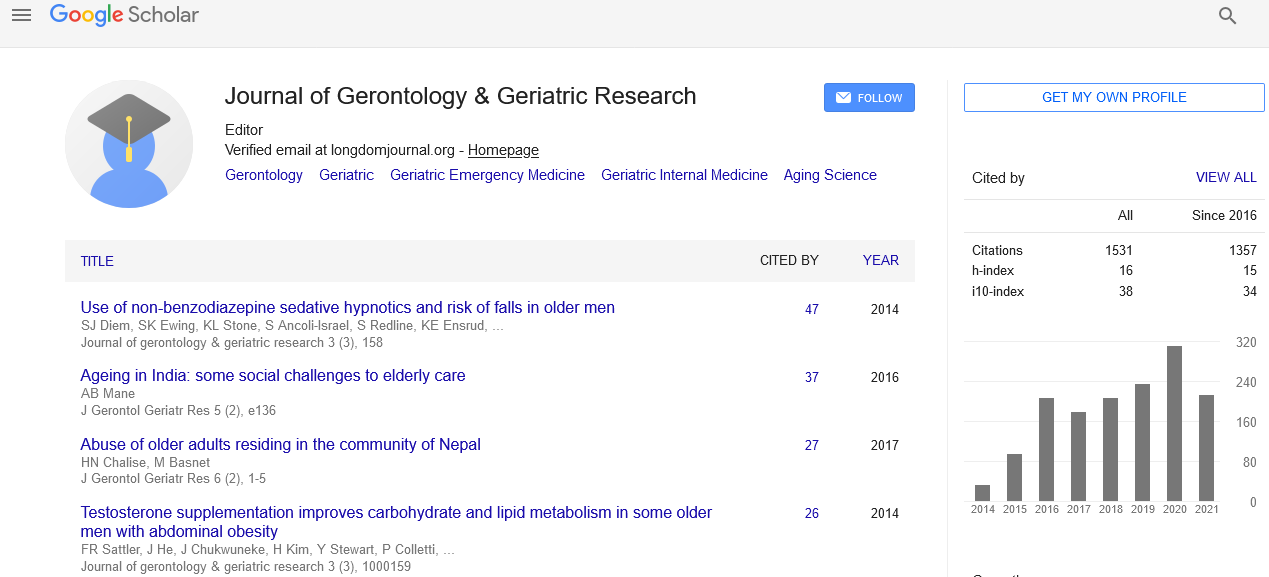PMC/PubMed Indexed Articles
Indexed In
- Open J Gate
- Genamics JournalSeek
- SafetyLit
- RefSeek
- Hamdard University
- EBSCO A-Z
- OCLC- WorldCat
- Publons
- Geneva Foundation for Medical Education and Research
- Euro Pub
- Google Scholar
Useful Links
Share This Page
Journal Flyer

Open Access Journals
- Agri and Aquaculture
- Biochemistry
- Bioinformatics & Systems Biology
- Business & Management
- Chemistry
- Clinical Sciences
- Engineering
- Food & Nutrition
- General Science
- Genetics & Molecular Biology
- Immunology & Microbiology
- Medical Sciences
- Neuroscience & Psychology
- Nursing & Health Care
- Pharmaceutical Sciences
Abstract
Life Expectancy in Australian Seniors with or without Cognitive Impairment:The Australia Diabetes, Obesity and Lifestyle Study Wave 3
Kimberly C Ashby-Mitchell, Dianna Magliano, Jonathan Shaw and Kaarin Anstey
Objective: To determine prevalence of cognitive impairment (CI) and to estimate life expectancy with and without cognitive impairment in the Australian population over age 60.
Method: Adults aged 60 and older participating in the 12 year follow-up of the Australia Diabetes Obesity and Lifestyle Study (AusDiab) were included in the sample (n=1666). The mean age was 69.5 years, and 46.3% of the sample was male. The Mini-Mental State Examination was used to assess cognitive impairment. Logistic regression analysis was used to determine the effect of predictor variables (age, gender, education), measured at baseline, on cognitive impairment status. The Sullivan Method was used to estimate Total Life Expectancy (TLE), Cognitively Impaired (CILE) and Cognitive Impairment-free life expectancies (CIFLE).
Results: Odds of CI were greater for males than females (OR 2.1, 95% confidence interval: 1.2-3.7) and among Australians with low education levels compared with Australians with high education levels (OR 2.1, 95% confidence interval: 1.2-3.7). The odds of CI also increased each year with age (OR 1.1, (95% confidence interval: 1.0-1.1). It was found that in all age groups females have greater TLE and CIFLE when compared to their male counterparts.


